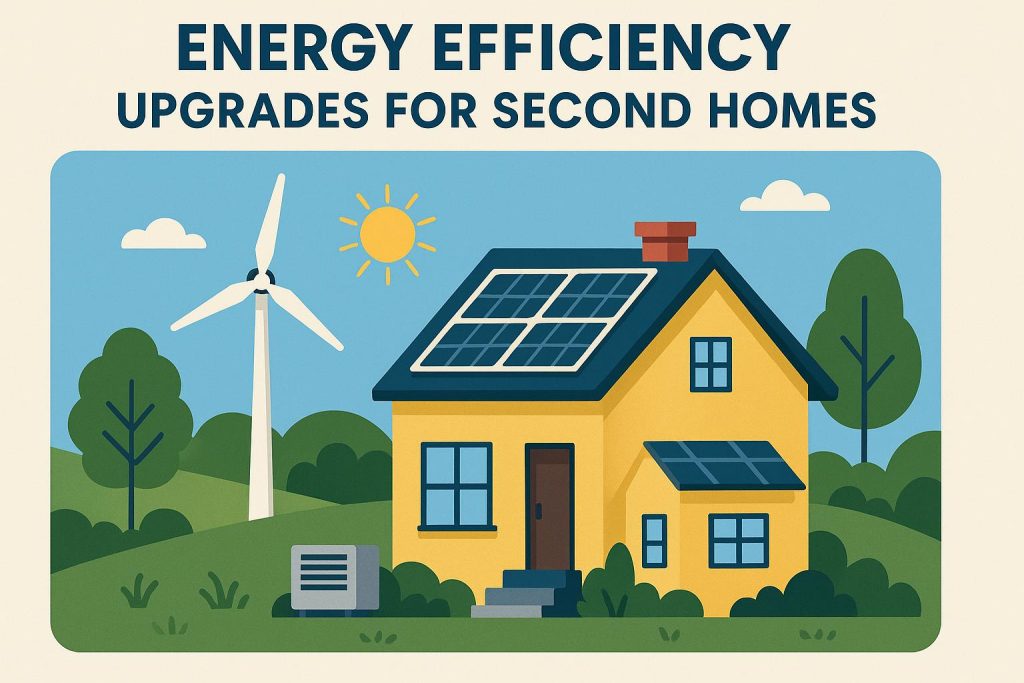Energy efficiency upgrades for second homes

Introduction to Energy Efficiency in Second Homes
Many homeowners invest in second homes for vacation purposes or as rental properties. While these homes offer numerous benefits, energy efficiency often takes a backseat in their maintenance plans. Upgrading your second home for better energy efficiency not only helps in reducing energy bills but also supports environmental sustainability.
Understanding Energy Efficiency
Energy efficiency refers to using less energy to perform the same task, thereby minimizing energy waste. For second homes, which are not used year-round, it is a cost-effective measure to ensure that energy consumption remains low during periods of occupancy and vacancy.
Common Areas for Energy Efficiency Upgrades
There are several common areas where homeowners can implement energy efficiency upgrades to make their second homes more sustainable and cost-effective.
Insulation is crucial for maintaining a comfortable indoor environment. Proper insulation in walls, attics, and floors ensures that your home retains heat during winters and stays cool in the summer. Materials like spray foam, cellulose, and fiberglass are highly effective in reducing energy costs, as they prevent heat from escaping in the winter and entering during the summer months.
Windows and Doors are often the source of significant energy loss if not properly insulated. By adding double-glazed windows or weather stripping to doors, homeowners can reduce air leaks effectively. This simple step can significantly lower the heating and cooling requirements of a home, thus contributing to overall energy efficiency.
Artificial lighting is another area where energy can be conserved. By replacing incandescent bulbs with LED lighting, homeowners can achieve substantial energy efficiency. LEDs consume less electricity and have a longer lifespan compared to traditional lighting, offering both financial and environmental benefits.
Benefits of Energy Efficiency Upgrades
Improving energy efficiency in second homes can lead to several financial and environmental benefits. Reduced energy bills are an immediate financial benefit, as efficient appliances and systems use less power to perform the same functions. Lower energy consumption also has a positive impact on reducing carbon emissions, contributing to environmental conservation efforts.
Moreover, energy-efficient homes often have a higher resale value, making these upgrades a wise long-term investment. Buyers are increasingly looking for eco-friendly features in homes, and those equipped with sustainable technologies are more attractive in the real estate market.
Financial Incentives and Support
Homeowners can take advantage of various financial incentives for making energy-efficient upgrades. Many governments offer rebates and tax credits for improvements like upgrading insulation, windows, heating systems, and more. These incentives can significantly reduce the cost of initial investments, making energy efficiency upgrades more accessible to a broader audience.
To explore available incentives, it can be beneficial to visit government websites dedicated to energy efficiency programs or consult with local energy providers. These resources provide valuable information about the types of incentives available and the application processes required to receive financial support.
Implementing Energy Efficiency Solutions
To successfully implement energy efficiency solutions, homeowners may consider engaging with energy experts or contractors who can provide personalized advice suited to the home’s structure and environment. Experts can help identify areas where energy is being wasted and recommend practical solutions that align with the homeowner’s budget and sustainability goals.
In addition to professional consultations, many homeowners find it helpful to conduct energy audits using online tools or by hiring professionals. These audits provide detailed insights into a home’s energy consumption patterns, helping to identify inefficiencies and prioritize upgrades that offer the maximum impact.
Conclusion
Effective energy efficiency upgrades in second homes contribute to both personal financial savings and broader environmental goals. Homeowners are encouraged to assess their property’s current energy performance and explore the many avenues available to enhance it. Addressing areas like insulation, windows, doors, and lighting can significantly reduce energy costs and environmental impact.
For further information and guidance, consider consulting with professionals who specialize in energy efficiency or exploring detailed resources online. The long-term benefits of improved energy efficiency are substantial, offering not only cost savings but also contributing to a more sustainable and environmentally-friendly lifestyle.
